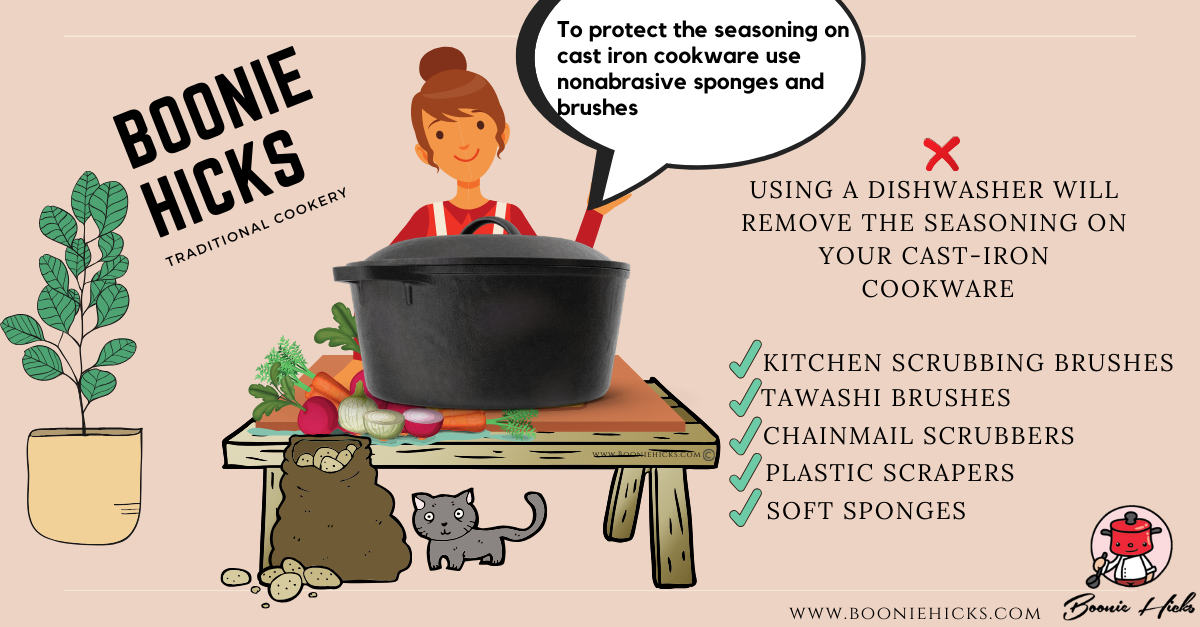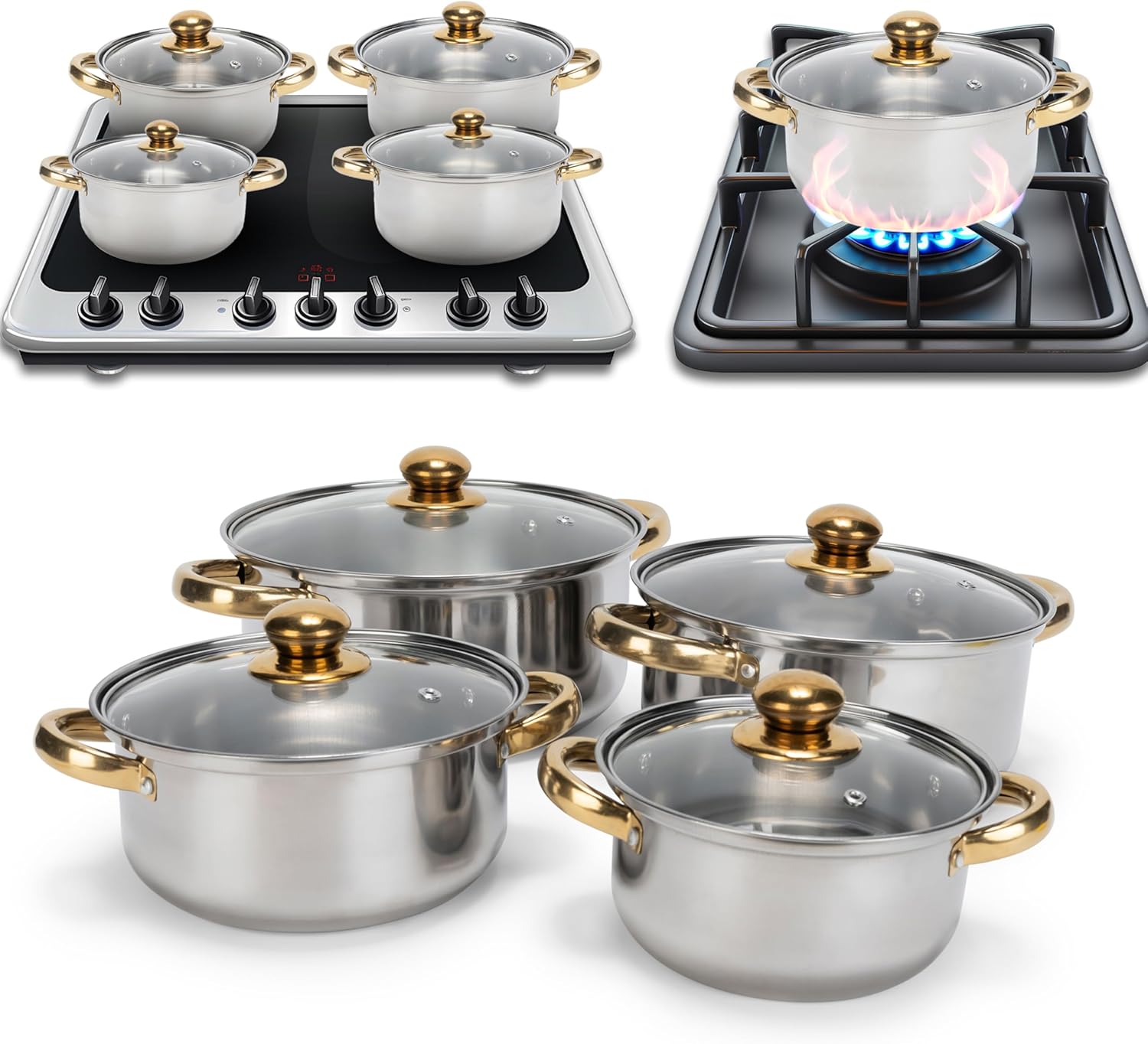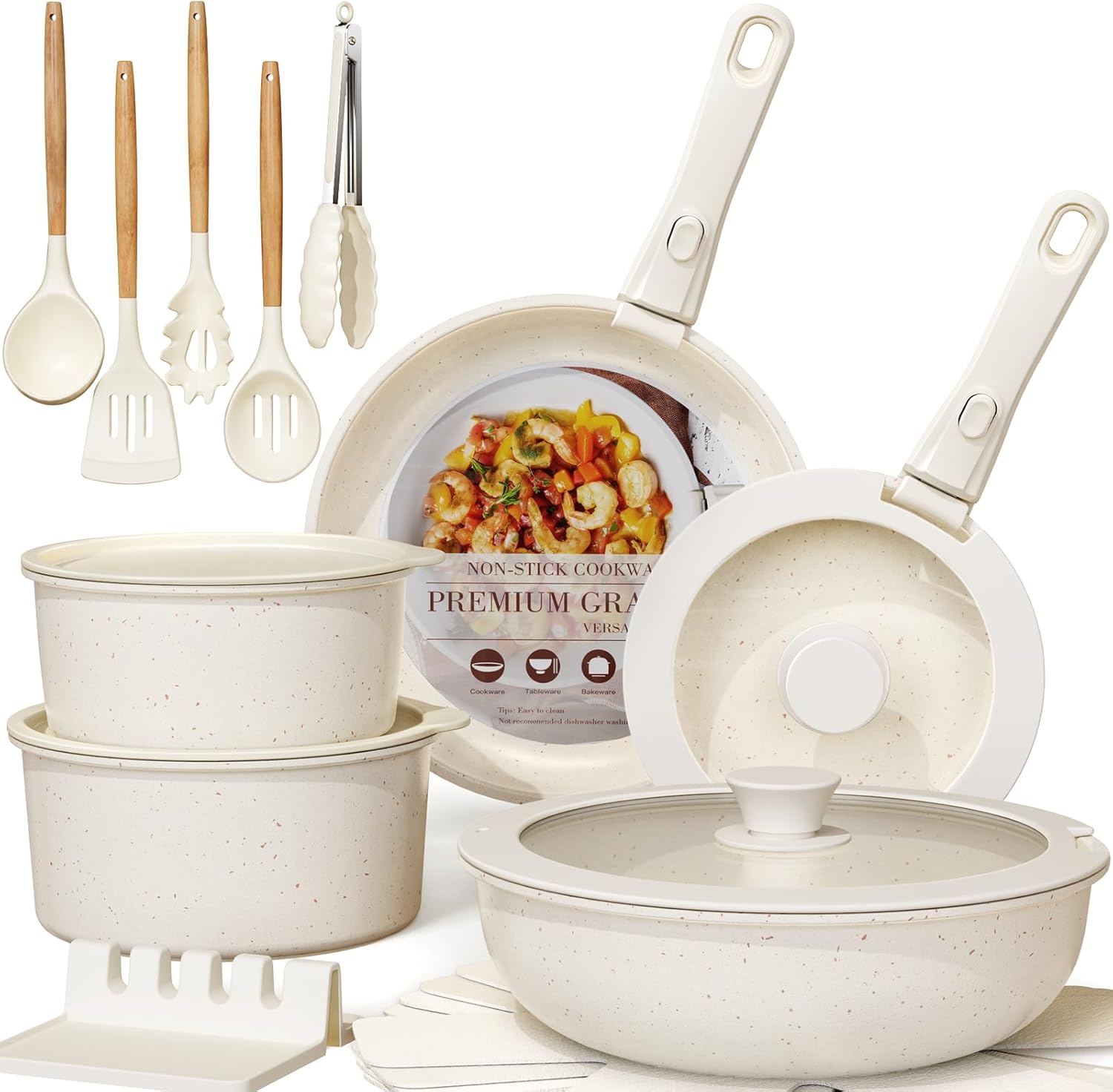Cast iron cookware has several disadvantages, including its heavy weight and susceptibility to rust. It also requires regular seasoning to maintain its non-stick properties.
Cast iron cookware has long been a favorite among chefs and home cooks alike. Its ability to retain heat makes it ideal for slow cooking and searing. However, this type of cookware isn’t without its drawbacks. Many users find the weight cumbersome, making it difficult to handle.
Rust can develop if not properly cared for, requiring diligent maintenance. Additionally, cast iron can react with acidic foods, affecting flavor and potentially damaging the cookware. Understanding these disadvantages helps consumers make informed decisions when choosing kitchen essentials, ensuring a balance between performance and practicality in their culinary adventures.

Credit: stahlkitchens.com
The Weighty Issue Of Cast Iron
Cast iron cookware is popular for its durability. Yet, its weight can be a significant drawback. Cooking with heavy pots and pans can be challenging for many. This section explores the disadvantages related to the weight of cast iron cookware.
Heavy Lifting In The Kitchen
Using cast iron cookware often feels like a workout. These pots and pans can weigh a lot. Here are some reasons why the weight is an issue:
- Difficulty in Handling: Lifting a heavy skillet can strain your wrists.
- Potential for Accidents: Dropping a heavy pan can cause injuries.
- Fatigue: Cooking with heavy cookware can tire you out quickly.
Many chefs love the heat retention of cast iron. Yet, heavy lifting can discourage new cooks.
Storage Struggles
Storing cast iron cookware can be a challenge. Their weight makes them hard to stack. Here are some common storage issues:
- Space Requirements: They need more shelf space.
- Accessibility: Hard to reach if stacked high.
- Protection: They may scratch other cookware.
Finding a suitable storage solution can be tricky. Consider using a sturdy rack or dedicated cabinet. Protect your cookware by placing cloth between pans.
The Rust Factor
Cast iron cookware is popular for many reasons. Yet, rust is a significant downside. This issue can ruin your beloved pans and skillets. Understanding the rust factor helps you maintain your cookware effectively.
Moisture: The Enemy Of Cast Iron
Moisture is the main cause of rust on cast iron. Water can seep into the surface and create oxidation. This process leads to rust formation. Here are some key points:
- Always dry your cast iron completely after washing.
- Avoid soaking your cast iron in water.
- Store it in a dry place to prevent moisture buildup.
Humidity can also worsen rust issues. High humidity levels encourage moisture retention. Always consider the environment where you store your cookware.
Preventing And Treating Rust
Prevention is vital for maintaining cast iron cookware. Use these tips:
- Seasoning: Apply a thin layer of oil after cleaning.
- Heat: Heat the pan to evaporate any remaining moisture.
- Storage: Place a paper towel inside to absorb moisture.
If rust forms, don’t panic. Follow these steps to treat it:
- Scrub the rust with steel wool or a stiff brush.
- Wash with mild soap and water.
- Re-season the cookware thoroughly.
Keeping your cast iron cookware rust-free requires effort. With proper care, you can enjoy its benefits for years.
Heat Retention And Distribution
Cast iron cookware excels in heat retention but can lead to uneven distribution. This results in hot spots that may burn food. Users often find it challenging to control cooking temperatures, affecting meal quality.
Cast iron cookware is famous for its heat retention. However, it also has some disadvantages in heat distribution. Understanding these issues can help you make better cooking choices.
Uneven Heating Challenges
One major challenge is uneven heating. Cast iron pans can heat up in hot spots. This means some areas get hotter than others. As a result, food may cook unevenly. Here are some common problems:
- Burnt spots on food.
- Undercooked areas in dishes.
- Inconsistent browning of meats.
These issues can affect the taste and texture of your meals. Proper cooking techniques can help, but it requires attention.
Long Heat-up Times
Another disadvantage is the long heat-up time. Cast iron takes longer to reach the desired temperature. This can be frustrating when you’re in a hurry. Here are some effects of long heat-up times:
- Extended cooking time.
- Delayed meal preparation.
- Increased energy use.
Patience is key when using cast iron. Make sure to preheat your cookware properly. This helps improve cooking results.
Complex Care And Maintenance
Cast iron cookware requires special care. This ensures its longevity and performance. New users often find this maintenance challenging. Here’s what to know about its upkeep.
Seasoning: A Recurring Task
Seasoning is essential for cast iron. It creates a non-stick surface. This process involves applying oil and heating the cookware.
- Clean the skillet with hot water.
- Dry it thoroughly to prevent rust.
- Apply a thin layer of vegetable oil.
- Heat it in the oven for an hour.
Repeat this process regularly. Over time, the seasoning builds up. A well-seasoned skillet improves cooking quality.
The No-soap Debate
Cleaning cast iron is different. Many users debate using soap. Here are the main points:
| Argument | Details |
|---|---|
| Use Soap | Removes food residue effectively. |
| No Soap | May strip the seasoning away. |
Experts recommend avoiding soap. A simple hot water rinse works well. Use a stiff brush for stubborn bits.
Limited Dishwasher Safety
Cast iron cookware is beloved for its durability and heat retention. However, it has limitations, especially regarding dishwasher safety. Many users wonder about the best way to clean their cast iron. This section focuses on the challenges of using a dishwasher for cast iron.
Handwashing Hassles
Cleaning cast iron cookware requires extra effort. Here are some key points:
- Cast iron needs handwashing to maintain its seasoning.
- Soap can strip away the natural oils.
- Scrubbing too hard can damage the surface.
Many people find handwashing tedious. It requires special attention and care. Neglecting these steps can lead to rust and deterioration.
Why Dishwashers Are A No-go
Using a dishwasher for cast iron is not recommended. Here’s why:
| Reason | Impact |
|---|---|
| High heat | Can warp the cast iron. |
| Detergent | Strips seasoning, leading to rust. |
| Water exposure | Increases risk of corrosion. |
Dishwashers use intense heat and harsh detergents. These factors compromise the quality of cast iron. Following proper cleaning methods is crucial for longevity.

Credit: www.bbqguys.com
Cooking Limitations
Cast iron cookware offers many benefits. Yet, it has some cooking limitations. These can affect how you prepare meals.
Acidic Foods And Cast Iron
Cooking acidic foods in cast iron can be tricky. Acidic ingredients can react with the iron. This reaction can lead to:
- Unpleasant metallic taste in food
- Damage to the seasoning layer
- Food sticking to the pan
Examples of acidic foods include:
- Tomatoes
- Citrus fruits
- Vinegar-based sauces
These foods can alter the flavor and texture of your dish. It’s best to avoid cooking them in cast iron.
Not Ideal For All Cooking Techniques
Cast iron cookware is not perfect for every cooking method. Some techniques may not work well with it:
| Cooking Technique | Suitability |
|---|---|
| Searing | Good |
| Simmering | Not ideal |
| Stir-frying | Challenging |
| Baking | Excellent |
For simmering, use other pots. Cast iron retains heat well but may overcook food.
Stir-frying can be difficult. The weight of cast iron makes quick movements hard.
Choose your cooking techniques wisely. Not every method suits cast iron.
Potential Health Concerns
Cast iron cookware is popular, but it has some health risks. One main concern is the leaching of iron into food. This may affect some people negatively. Understanding these risks is important for safe cooking.
Iron Leaching Into Food
Cast iron pans can release iron into your meals. This happens especially when cooking acidic foods. Foods like tomatoes or vinegar-based dishes may increase iron levels.
Here are some key points about iron leaching:
- Iron leaching can raise iron levels in food.
- Cooking time and temperature affect how much iron leaches.
- Foods with high acidity absorb more iron.
Most people tolerate this well. However, some might face issues with excess iron intake.
Implications For Those With Hemochromatosis
People with hemochromatosis must be careful with cast iron cookware. This condition causes the body to absorb too much iron. Using cast iron can worsen their health.
Here are some implications for those affected:
- Higher risk of iron overload.
- Possible damage to organs like the liver.
- Increased chance of diabetes and heart issues.
Consulting a doctor is wise for those with this condition. They can suggest safe cooking alternatives.
Cost And Value
Cast iron cookware offers great durability. But, its cost can be a concern. Understanding the financial aspects helps in making a wise choice.
Initial Investment Vs. Longevity
Cast iron cookware requires a higher initial investment. The price varies based on brand and size. Here are some points to consider:
- Higher upfront costs compared to other materials.
- Lasts for decades with proper care and seasoning.
- Can be passed down through generations.
This long lifespan can offset the initial cost. A well-maintained skillet may outlast several cheaper options. Here’s a quick comparison:
| Cookware Type | Initial Cost | Longevity |
|---|---|---|
| Cast Iron | $$$ | Decades |
| Non-Stick | $$ | 5-10 years |
| Stainless Steel | $$$ | 20 years |
Comparing To Other Cookware Options
Cast iron cookware has distinct advantages. Yet, it’s essential to compare it with other options:
- Non-Stick Cookware: Easier to clean, but can wear out quickly.
- Stainless Steel: Durable and versatile, but often more expensive.
- Ceramic Cookware: Non-toxic, but can chip or crack.
Consider the following factors:
- Frequency of use: How often do you cook?
- Type of meals: What do you prepare most?
- Budget: What can you afford?
Evaluating these factors helps in determining true value. Choose what aligns best with your cooking style and budget.

Credit: www.reddit.com
Frequently Asked Questions
What Are The Main Drawbacks Of Cast Iron Cookware?
Cast iron cookware can be heavy and cumbersome to handle. Additionally, it requires regular seasoning to maintain its non-stick surface. Its porous nature can absorb flavors and odors, affecting the taste of dishes. Finally, cast iron can rust if not properly cared for, leading to potential health concerns.
Is Cast Iron Cookware Difficult To Maintain?
Yes, cast iron cookware requires specific maintenance. Regular seasoning is essential to prevent rust and maintain its non-stick properties. Cleaning must be done carefully to avoid stripping its seasoning. Avoid using soap, as it can damage the seasoning layer. Proper care ensures longevity but demands commitment from the user.
Can Cast Iron Cookware Be Used On All Heat Sources?
No, cast iron cookware may not suit all heat sources. While it works well on gas and electric stoves, some induction cooktops may require specific types. Additionally, using it in the oven is excellent, but high heat can damage certain finishes.
Always check manufacturer guidelines for compatibility.
Does Cast Iron Cookware React With Acidic Foods?
Yes, cast iron can react with acidic foods. Cooking acidic ingredients like tomatoes or vinegar can strip seasoning, leading to a metallic taste. This reaction can also cause leaching of iron into the food. To avoid this, use enameled cast iron or limit cooking acidic dishes in uncoated cast iron.
Conclusion
Cast iron cookware offers many benefits, but it also has notable disadvantages. Its weight can be cumbersome for some users. Maintenance requires regular seasoning, which may deter some cooks. Lastly, it can react with acidic foods, altering flavors. Consider these factors before investing in cast iron for your kitchen.





Leave a Reply